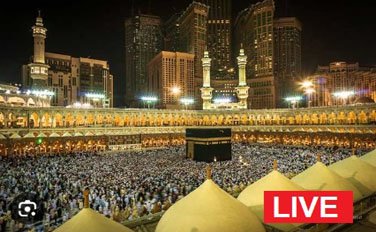Tomb of Abdullah bin Rawahah (رضي الله عنه): The Legacy of a Scholar-Warrior

Nestled amidst the historical landscape of Al-Mazar, near Mu’tah in Jordan, lies the revered Tomb of Abdullah bin Rawahah (رضي الله عنه). This poignant landmark commemorates the life and legacy of a remarkable scholar, poet, and courageous companion of Prophet Muhammad (ﷺ). His pivotal role in the Battle of Mu’tah (629 CE) continues to inspire generations.
A Wellspring of Knowledge (Early 7th Century CE):
Abdullah bin Rawahah (رضي الله عنه) was known for his vast knowledge of Islam and his exceptional skills in reciting poetry. He readily embraced Islam during its nascent stages and actively participated in the early struggles of the Muslim community in Mecca and Medina. He was not only a scholar but also a skilled military strategist who played a crucial role in the development of the Muslim community.
A Conversation Highlighting Trust (629 CE):
As tensions rose with the Roman Empire, Prophet Muhammad (ﷺ) planned a military expedition to Mu’tah. He appointed three leaders in succession, with Abdullah bin Rawahah (رضي الله عنه) designated as the third in command. This decision reflects the Prophet’s (ﷺ) trust in Abdullah’s (رضي الله عنه) strategic mind and leadership qualities.
Prophet Muhammad (ﷺ): “If these two (Zaid and Ja’far) are killed, then the banner belongs to Abdullah bin Rawahah (رضي الله عنه)” (Source: Sahih Bukhari)
The Battle of Mu’tah: A Crucible of Faith (629 CE):
Abdullah bin Rawahah (رضي الله عنه) accompanied the Muslim forces to Mu’tah. As the battle unfolded, the first two commanders fell martyrs. With unwavering resolve, Abdullah (رضي الله عنه) assumed leadership, demonstrating exceptional tactical skills in directing the remaining troops. He fought valiantly alongside his fellow Muslims, inspiring them with his courage and leadership. Narrations mention that Abdullah (رضي الله عنه) was martyred during the final charge, sacrificing his life in defense of Islam.
A Tomb Steeped in History (Uncertain Date):
The exact date of the construction of the Tomb of Abdullah bin Rawahah (رضي الله عنه) remains unclear. Historical estimates suggest it might have been built sometime during the early Islamic period, potentially by the Umayyad dynasty (661-750 CE). The tomb itself is a relatively simple structure, featuring a rectangular base surmounted by a dome. This design reflects the austere style of Islamic mortuary architecture.
A Place of Reflection and Inspiration:
Today, the Tomb of Abdullah bin Rawahah (رضي الله عنه) serves as a pilgrimage site and a powerful reminder of his multifaceted contributions to Islam. He is remembered not only for his scholarship and poetry but also for his courage and strategic brilliance.
Conclusion: A Legacy of Knowledge and Valor
The story of Abdullah bin Rawahah (رضي الله عنه) offers valuable lessons that transcend time:
- The Importance of Knowledge: Abdullah’s (رضي الله عنه) vast knowledge of Islam serves as a reminder of the importance of seeking and sharing knowledge for the betterment of the community.
- The Power of Words: His exceptional skills in poetry highlight the power of words to inspire and motivate others.
- Courage and Strategic Brilliance: Abdullah’s (رضي الله عنه) bravery at Mu’tah and his tactical skills inspire us to face challenges with courage and strategic thinking.
The Tomb of Abdullah bin Rawahah (رضي الله عنه) stands as a testament to a life dedicated to knowledge, faith, and the defense of Islam. He remains an inspiration for scholars, warriors, and all who strive to leave a positive mark on the world.
References: Own Research, Wikipedia.
Please note that this entry is provided for informational purposes only. It is imperative not to engage in praying to graves or seeking supplication through them, as this constitutes associating partners with Allah (ﷻ), which is strictly prohibited.
Related Post: Jordan’s Gems:Historical Mosques and Places
Also Read: Exploring Egypt’s Mosques
May You Like: History of Egypt

